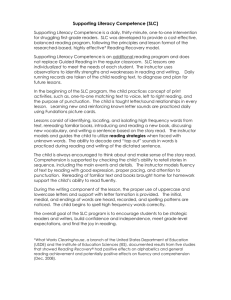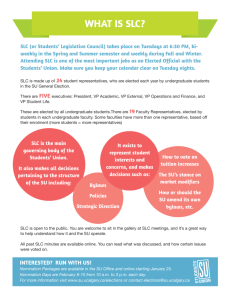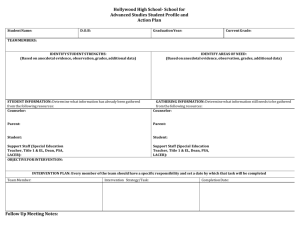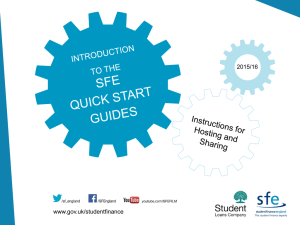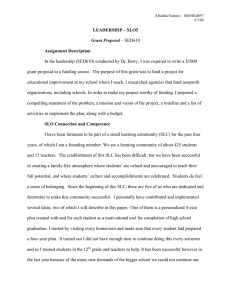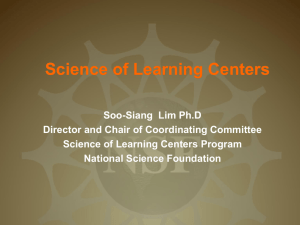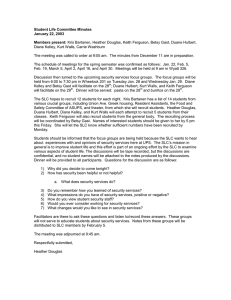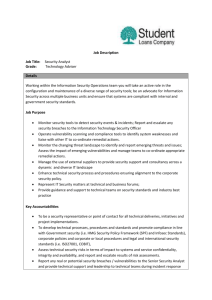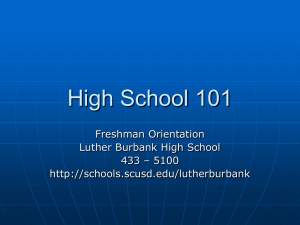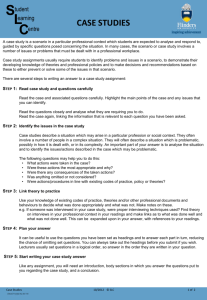INSTITUTE FOR STUDENT ACHIEVEMENT (ISA)
advertisement
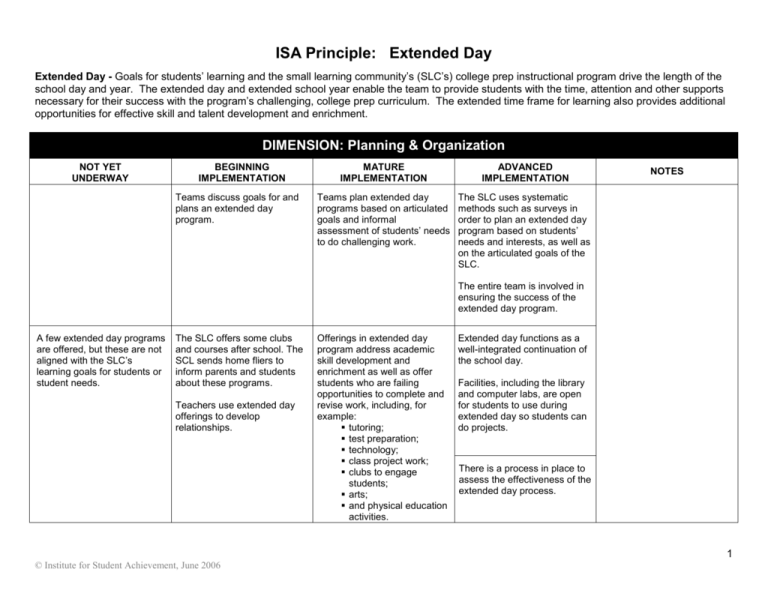
ISA Principle: Extended Day Extended Day - Goals for students’ learning and the small learning community’s (SLC’s) college prep instructional program drive the length of the school day and year. The extended day and extended school year enable the team to provide students with the time, attention and other supports necessary for their success with the program’s challenging, college prep curriculum. The extended time frame for learning also provides additional opportunities for effective skill and talent development and enrichment. DIMENSION: Planning & Organization NOT YET UNDERWAY BEGINNING IMPLEMENTATION Teams discuss goals for and plans an extended day program. MATURE IMPLEMENTATION ADVANCED IMPLEMENTATION Teams plan extended day programs based on articulated goals and informal assessment of students’ needs to do challenging work. The SLC uses systematic methods such as surveys in order to plan an extended day program based on students’ needs and interests, as well as on the articulated goals of the SLC. NOTES The entire team is involved in ensuring the success of the extended day program. A few extended day programs are offered, but these are not aligned with the SLC’s learning goals for students or student needs. The SLC offers some clubs and courses after school. The SCL sends home fliers to inform parents and students about these programs. Teachers use extended day offerings to develop relationships. Offerings in extended day program address academic skill development and enrichment as well as offer students who are failing opportunities to complete and revise work, including, for example: tutoring; test preparation; technology; class project work; clubs to engage students; arts; and physical education activities. Extended day functions as a well-integrated continuation of the school day. Facilities, including the library and computer labs, are open for students to use during extended day so students can do projects. There is a process in place to assess the effectiveness of the extended day process. 1 © Institute for Student Achievement, June 2006 ISA Principle: Extended Day DIMENSION: Staff & Student Participation NOT YET UNDERWAY BEGINNING IMPLEMENTATION MATURE IMPLEMENTATION ADVANCED IMPLEMENTATION Some teachers voluntarily make themselves available to students after school for the purposes of tutoring, discussion of problems, etc. The SLC is organized so that teachers can set regular hours after school to help students with revisions on their reports, completion of their projects, or to discuss problems. There is a cultural norm within the SLC that all SLC members participate in extended day programs for academic support and curricular enrichment. Teams identify students who need additional academic support and encourage them to attend extended day activities. Many students voluntarily use extended day to complete projects and other class assignments. Many students who received grades of incomplete or failure attend summer school to complete work so that they can pass their courses. Students expect to, and are in the habit of, participating in extended day programs, and attendance is high. Students take advantage of extended day to meet with individual teachers to discuss coursework and social and emotional issues. Some students voluntarily choose to participate in extended day programs. Some students attend district summer school programs. NOTES Students who need to complete work in a course participate in summer school to complete course requirements. Students participate in a range of school-supported summer learning experiences, such as educational travel, internships, and college courses. 2 © Institute for Student Achievement, June 2006

